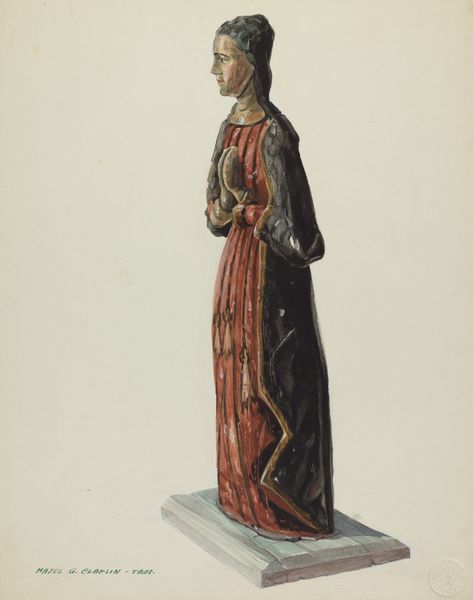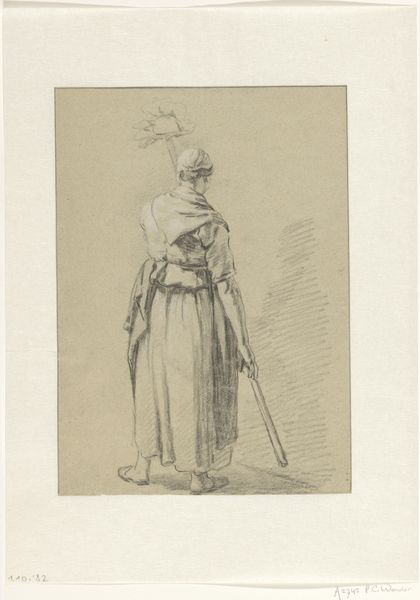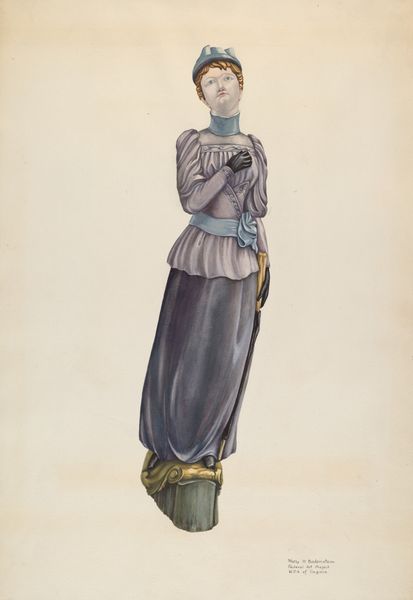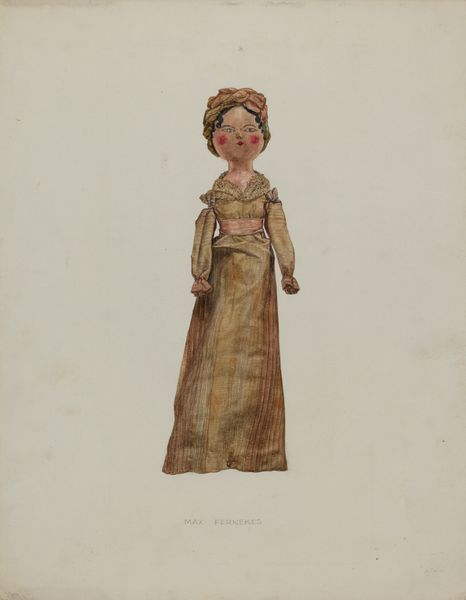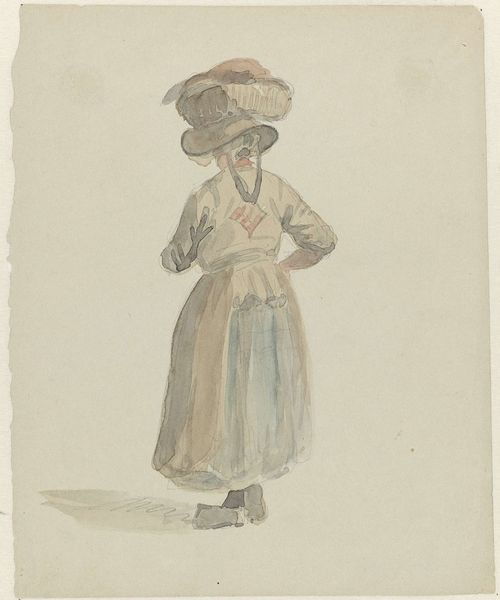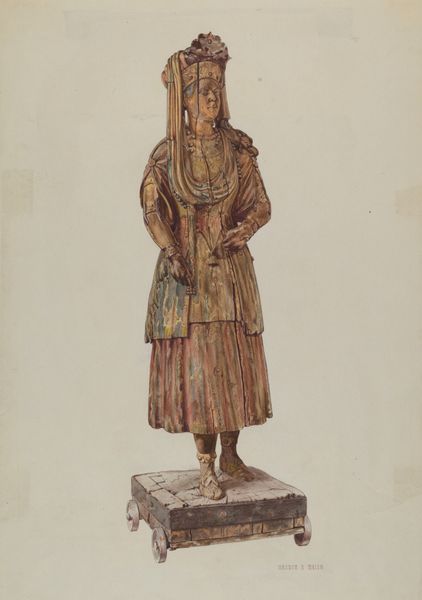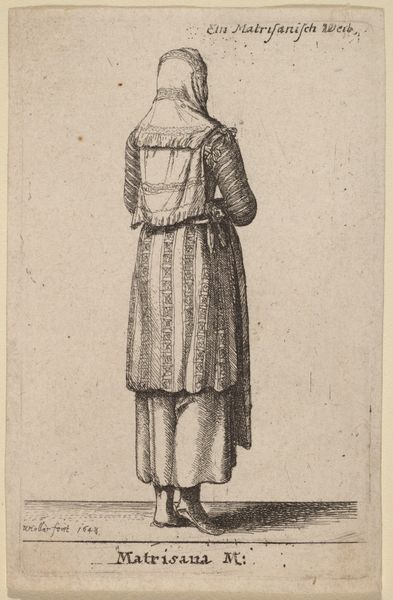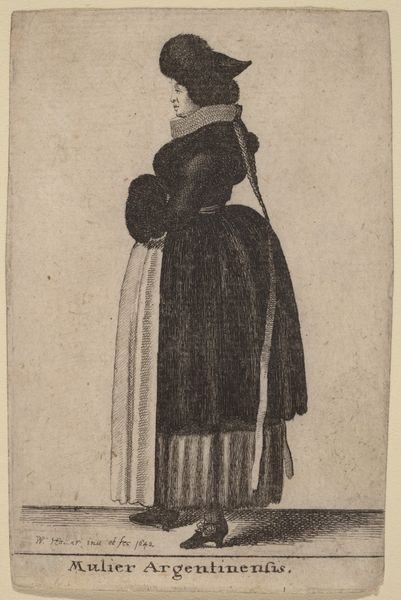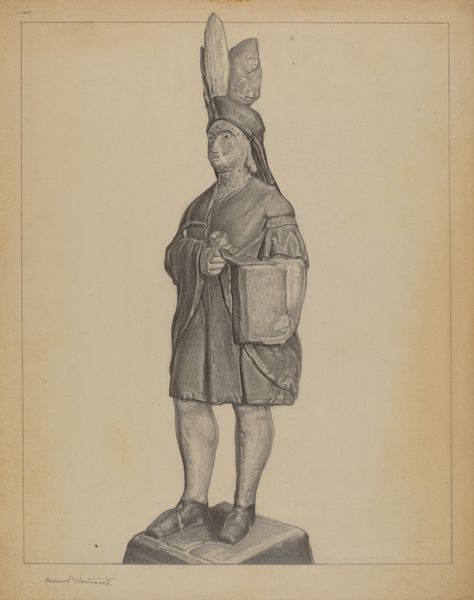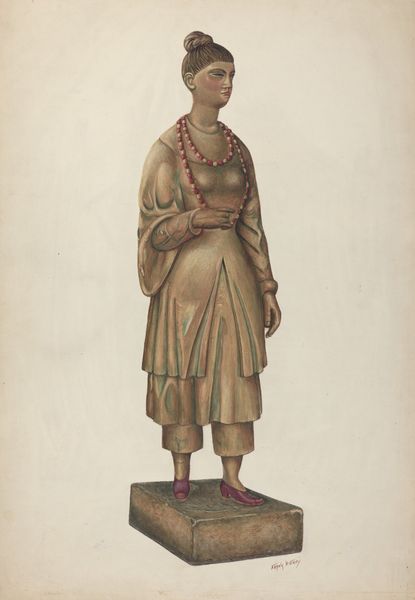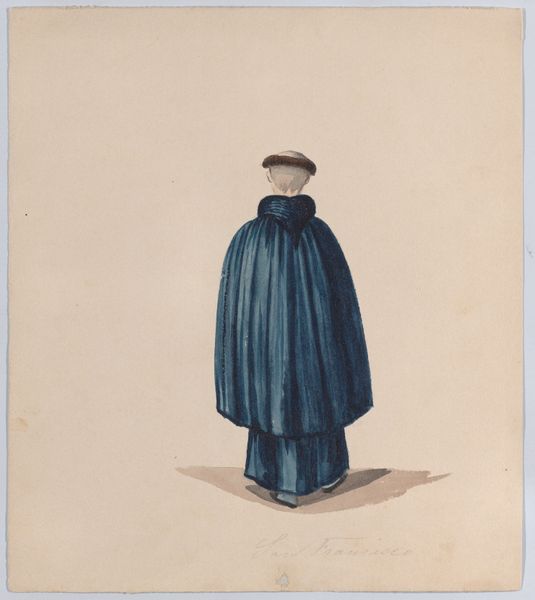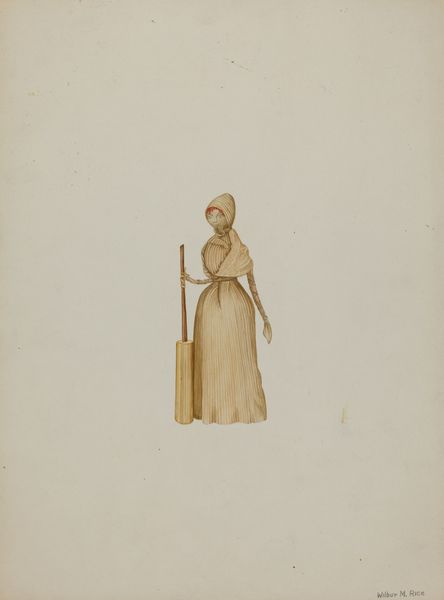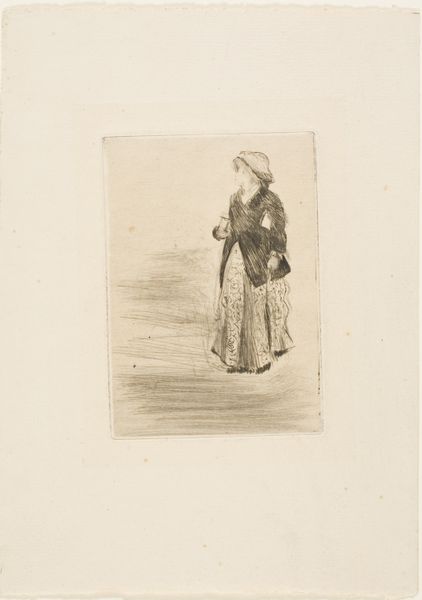
drawing, watercolor
#
portrait
#
drawing
#
figuration
#
watercolor
#
pencil drawing
#
folk-art
#
watercolour illustration
Dimensions: overall: 35.5 x 26.7 cm (14 x 10 1/2 in.) Original IAD Object: none given
Copyright: National Gallery of Art: CC0 1.0
Curator: Here we have "Santo Bulto," a watercolor made in 1939 by George E. Rhone. What strikes you about it? Editor: The palette is rather subdued, predominantly browns and tans, which gives it a solemn feel. There is something about its proportions, the somewhat rigid symmetry... It lends an air of gravity and monumentality despite what must be its relatively small scale. Curator: Yes, Rhone painted this during the Depression era. There was a renewed interest in folk art traditions as a means of celebrating a shared American identity amidst hardship. Depicting a “santo” or saint—often seen in rural New Mexican and Spanish Colonial homes—speaks volumes about seeking solace in traditional religious practices. Editor: The folds in the robe are really beautiful. They seem to almost be constructed of repeated triangular shapes, particularly around the waist where the cord cinches the figure. The artist has skillfully used value to describe the three-dimensional form. Curator: It’s important to understand these “santos” not merely as aesthetic objects, but as powerful symbols within a cultural context. They weren’t just decorations; families would pray to them. This watercolor helps preserve cultural memories and demonstrates an accessible way of engaging with the spiritual during tough times. Editor: Looking closer, there's also a tenderness in the rendering. Especially in the face and the soft, cupped hands of the figure. I love how simple these washes of color become an embodiment of both human and spiritual compassion. Curator: I think it brings a sense of dignified cultural preservation to a moment in history of resource scarcity and high needs for artistic representation for the masses. The bulto tradition offered spiritual comfort. And Rhone's illustration echoes this public desire for folk accessibility and inspiration. Editor: I appreciate, now knowing some of the history, how the formal elements reinforce the deeper cultural meanings inherent in the depiction itself. Curator: Indeed, it's a piece that invites us to reflect on history, devotion, and the resilience of art itself in reflecting those forces.
Comments
No comments
Be the first to comment and join the conversation on the ultimate creative platform.
